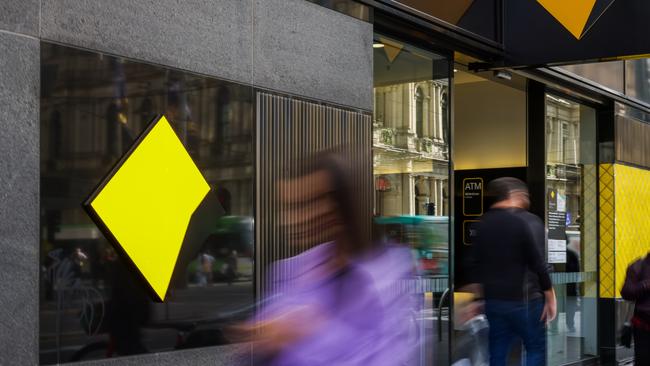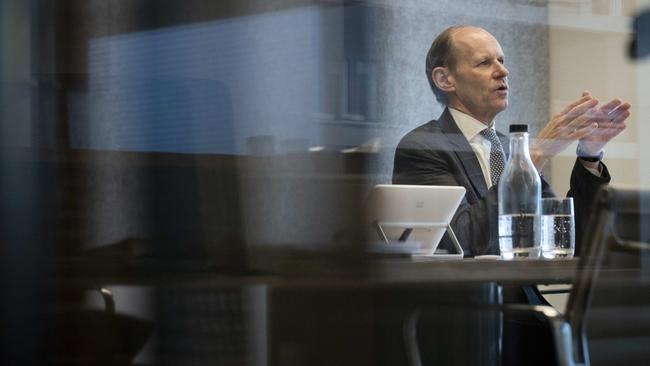Why the wave of bank bad debts was really a ripple
The doomsayers may not want to hear it but there’s no mortgage cliff, and it’s unlikely to come.

Business
Don't miss out on the headlines from Business. Followed categories will be added to My News.
A funny thing happened on the way to Australia’s great post-pandemic slowdown. The wave of mortgage losses we have been waiting and bracing for hasn’t arrived.
There has been a ripple of losses to be sure. Financial stress is real, painful and slowly rising in pockets across the economy, particularly among younger people. And these numbers are only now starting to show up on bank balance sheets.
Even with the cash rate either at or near its peak, the lag effect of interest rate rises mean the losses will grind higher for the rest of the year.
Perspective is needed. The increases are coming from historic lows. And given we are this deep into the cash rate hiking cycle, any losses banks are seeing are well below the average since the global financial crisis.
The doomsday cult may not want to hear it: There’s no mortgage cliff.
Australia out of the economic trough just yet, but we are certainly learning how to live with it. No bank boss is prepared to declare the worst has passed – particularly with some of their customers really feeling the squeeze – but the mood is becoming more confident inside each of the big four.

And this perspective is important in how we frame the discussion about the economic cycle and prepare for the recovery. It means that inflation remains the number one enemy and, while no one wants it, the Reserve Bank is well aware that numbers like benign lending losses show it has reasonable headroom if it wants to hike the cash rate again.
This week, Reserve Bank governor Michelle Bullock said she wasn’t ruling anything in or out, although most expect the central bank to wait before cutting rates some time next year.
Commonwealth Bank chief executive Matt Comyn took time out from an investor roadshow in the US to talk through his third-quarter numbers with The Australian.
He points out the strong jobs market is helping, and going into this downturn many were sitting on a higher level of savings built up through the pandemic. That’s given borrowers a massive headstart in paying down loans.
“There’s no question that many households and small businesses are feeling the pressure, acutely. We started to see that increase (in lending losses) and have been calling that out for 12 months, but the increase is relatively slight and well below historic averages,” he says.
“We will anticipate the function of the rate environment and high cost of living in the economy, those (losses) will continue to increase.”
Still, Comyn points out that credit card losses among banks in the US are running at around 8 per cent. In Australia, it is a little over 1 per cent. The expected direction of interest rates will be important in restoring confidence among borrowers, and this is vital in keeping losses low.
Comyn believes the cash rate will stay on hold for now, although the timing of any rate cut will become clearer later this year. CBA’s March quarter profit dipped 5 per cent from the same time last year to $2.4bn.
Betting against banks
Investors who were betting against Aussie banks in anticipation of red ink spoiling their balance sheets have long packed up and moved on to other targets. And it’s easy to see why. So far this year the average of big bank shares are up 10 per cent and the broader ASX 200 is up 1 per cent.
A quick run through of the banks’ mortgage books, and it shows the class of 2018 – people who took a mortgage out six years ago – are those feeling the pinch the most and have been late to repay their loans. In bank terms, these should be the hardened borrowers who have been used to paying off a monthly mortgage. Nor do they have anything to do with taking out an ultra-cheap mortgage during the pandemic.
Westpac, a bank that counts mortgage customers in the millions, had 190 properties in possession at the end of March, a drop of 20 in the past six months. Most of those were properties under construction where builders have gone bust.
National Australia Bank had around 140. This was up by six properties over the past two years. Yes – six.
The forward indicator of lending losses tells a similar story. For Commonwealth Bank, missed mortgage payments after 90 days, the most severe bucket, is gently pushing up and well below historical averages. Credit card losses, the most forward-looking indicator for financial stress, have barely moved.

ANZ’s 90-day lending losses are below this time three years ago – when the cash rate was near zero. ANZ’s credit card losses are at near record lows.
In CBA’s latest numbers, it topped up the amount it set aside to cover loans that have soured. Indeed, the bank did experience a lift in the level of troubled debts, with corporate loans souring at an increased rate.
Another view is that CBA’s overall lending losses are running at just 60 per cent of the average since the GFC, and the increases over two years have been slow. That’s after the most aggressive interest rate hiking cycle since the early 1990s.
At the nation’s biggest lender, CBA is most leveraged to the performance of the economy. And its latest accounts show lending losses compared to the size of its lending book actually fell in the March quarter.
Remember over that same period from December, CBA has been growing its lending book, so in real terms the drop is much greater.
It’s much the same story at each of the big four banks, and combined they make up 80 per cent of the lending across the economy. And then there’s the other big telltale sign the banks don’t expect things to get too much worse from here, with billions of dollars of spare cash being returned to shareholders in the recent reporting season.
Why is this downturn different? As Comyn says, the strength in Australia’s jobs market has surprised many.
So far, employment is holding up, with big businesses especially being prepared to trade through the downturn and hold on to the workers they already have rather than push through wholesale cost cuts. Even medium-sized businesses are holding their ground, with NAB recently noting its pipeline of business loans is a big as it ever has been. On Thursday, another business lender Judo said its pipeline of lending was also at a record high while customers in arrears reduced modestly in April.

Borrowing by business is an indicator of investment to come, and this is a further boost for jobs. The unemployment rate is expected to drift up and will be one to watch.
Second, tougher credit rules mean banks have been more selective who they lend to. And while this has been great for protecting the bank balance sheets, there’s a risk Australia loses out in the long run. ANZ’s boss Shayne Elliott’s has said responsible lending rules threaten to lock some potential borrowers out of the system, driving them to non-banks or even deeper into shadow lenders. And while bank lending books are pristine, losses are building among non-bank lenders and private credit providers.
Finally, not enough focus has been given to net savers, or those who are cashed up. This is really people over 55 and as a whole represent roughly a third of the consumer market. Remember, this cohort want interest rates to stay higher for longer. It gets more defined as you get up the age scales. On CBA’s numbers, those 65-plus have seen savings increase by 6.5 per cent over the past year. And to be frank, they are finding it hard to spend it all, with their discretionary spending up around 4 per cent. Their spending is going some of the way in picking up the slack. Record immigration intake is making up the rest of the spending gaps, although this creates its own economic stresses.
There’s a real risk it can go off the rails. Lurking in the shadows are shocks like a collapse in commodity prices, a spike in global funding costs, or even the prospect the RBA hikes rates. However, Australians need to be given more credit for showing how to adapt.
ANZ’s Elliott says the downturn has been very hard for a group of people, but so far “it’s been a pretty shallow downturn”
“My sense is if it gets any worse, it’ll probably be marginal. I think it speaks to the great resilience of the Australian economy,” he says.
johnstone@theaustralian.com.au
More Coverage
Originally published as Why the wave of bank bad debts was really a ripple





